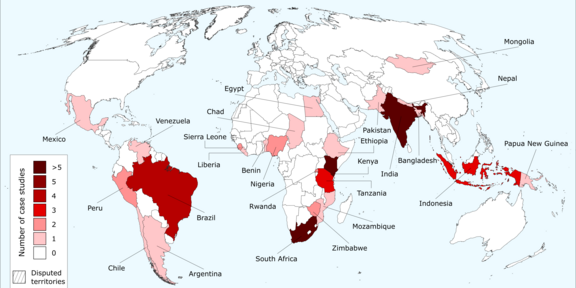Mapping the margins: a review of the impact of digital mapping on public participation in informal settlements

Informal areas in the Global South are still comparatively under-researched. This is partly due to the difficulties associated with access to these areas, especially when it comes to more complex research topics such as understanding the daily lives of residents, which are difficult to capture from the outside or purely on the basis of data. In planning, access to informal areas is not only important for research, but also for the participation of the population. The latter has increasingly come to the fore in recent years and has led to a growing number of publications on participatory planning, including in informal areas. Participation usually involves some form of data collection and, as much data is spatial, mapping, which is now largely carried out digitally. However, not much is known about the interface between digital mapping and participation in informal contexts. The review paper recently published in Habitat International by Alan Américo da Silva, Iasmin Fernanda Kormann da Silva (both Master's students at the Department of Spatial Planning) and René Westerholt explores this interface. The collected corpus of articles was compiled according to a rigorous protocol and analysed using a thematic analysis approach. The results show that digital mapping has so far led to relatively little additional direct involvement of the affected population. However, the results reveal a number of side effects that have a positive impact on the involvement of residents of informal areas in political planning processes. It is also to be noted that the relevant studies often focus on a few selected countries per continent, which can have an impact on the transferability of the results published in the literature. We hope that this review will be useful for both planning research and practice. The review article is partly based on the results of M-Project M04 from the winter term 2022/23, which were, however, significantly expanded subsequently. It is terrific to see that our students are able to produce such high-quality results and the RAM team congratulates in particular the two student co-authors of the research work outlined above.
da Silva, A. A., Kormann da Silva, I. F. and Westerholt, R. (2024): Mapping the margins: a systematic scoping review of the impact of digital mapping on public participation in informal settlements. Habitat International, 147, 103040. DOI: 10.1016/j.habitatint.2024.103040.

